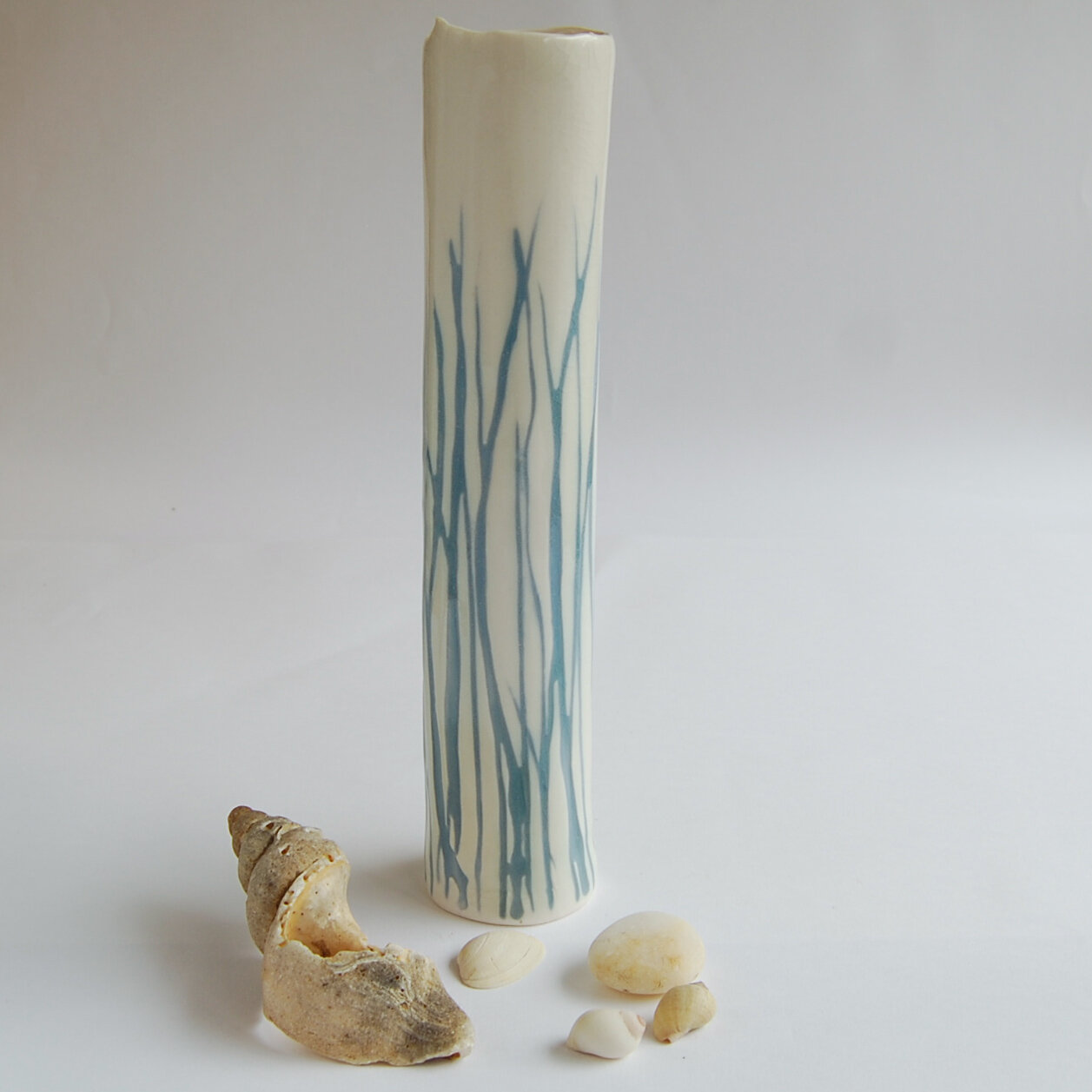seagrass meadows and the marine environment
David Attenborough’s ‘Blue Planet’ put the appalling plastic pollution of our oceans on our agendas. There’s increasing awareness of the effect of rising CO2 on corals and, of course, there are the melting ice caps.
But the importance of some of our marine resources are less well-known, so I wanted to make a series of work to help highlight some of the issues, of which seagrass meadows are amongst some of the most critical.
seagrass
Seagrass meadows can store carbon 35 times faster than tropical rainforests and harbour up to 40 times more marine life than bare sea beds. Meadows cover about 0.1% of the ocean globally but provide 10% of its carbon storage and a massive 7% of this key marine habitat is lost worldwide each year.
In the UK we have lost 92% of our Seagrass meadows, half of this in the past three decades, faster than anywhere else in the world. We have only 8,500 hectares of seagrass meadow left, an area similar in size to Newcastle upon Tyne.
There is a lot to know about Seagrass meadows and programmes are beginning to restore some of what we have lost. See the work of Project Seagrass on their website. My ‘Seagrass’ series is just a very small attempt to bring it to the attention of more people.
blue seagrass vase - Porcelain
coral
The same is true of my ‘Coral Pods’. These are inspired by the tiny coral polyps which release millions of coral spawn, often across huge distances.
Coral spawning occurs as a mass synchronized event, when all the coral species in an area release their eggs and sperm at about the same time. The timing of a broadcast spawning event is very important because male and female corals cannot move into reproductive contact with each other. Colonies may be separated by wide distances, so this release must be both precisely, and broadly timed, and usually occurs in response to multiple environmental cues.
Coral reefs have the highest biodiversity of any ecosystem on the planet—even more than a tropical rainforest. They occupy less than one percent of the ocean floor, but are home to more than twenty-five percent of marine life. This biodiversity is important for humanity as, thanks to their diversity, coral reefs provide millions of people with food, medicine, protection from storms, and revenue from fishing and tourism.
Over the past three decades we have lost half of the world’s coral reefs. My pods are a very small way of raising this issue more widely.
coral bowl - porcelain



